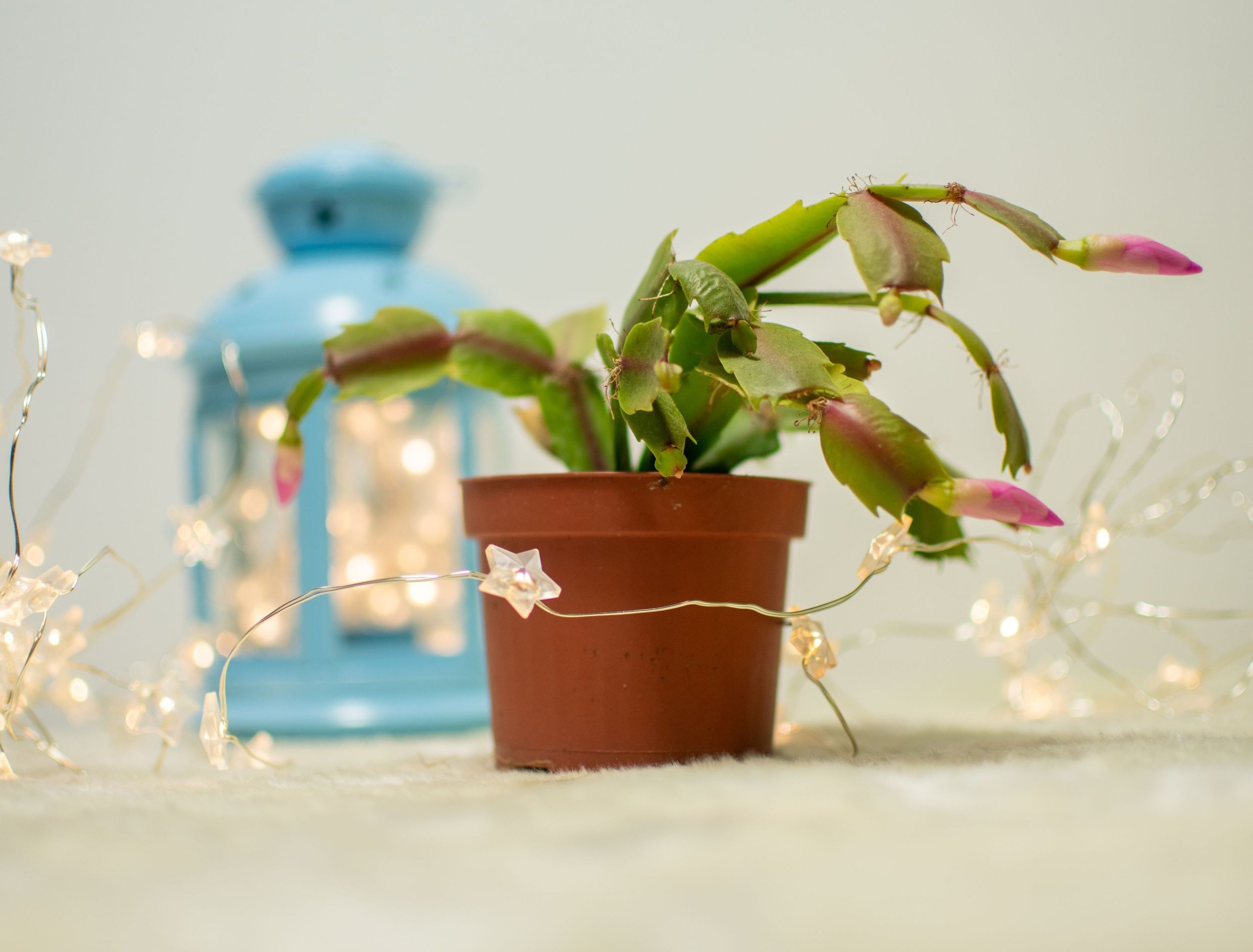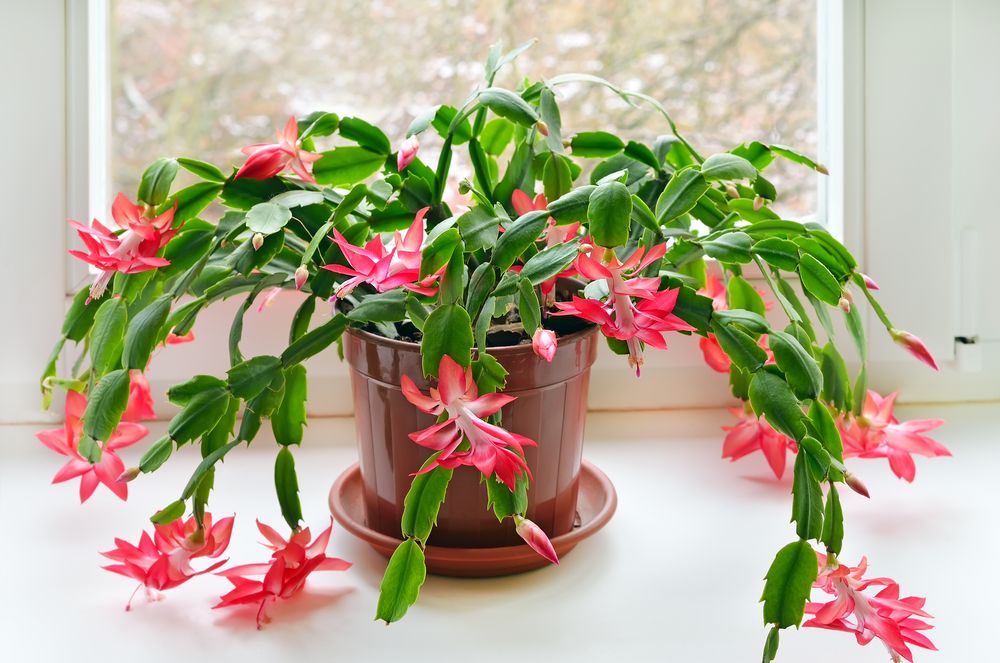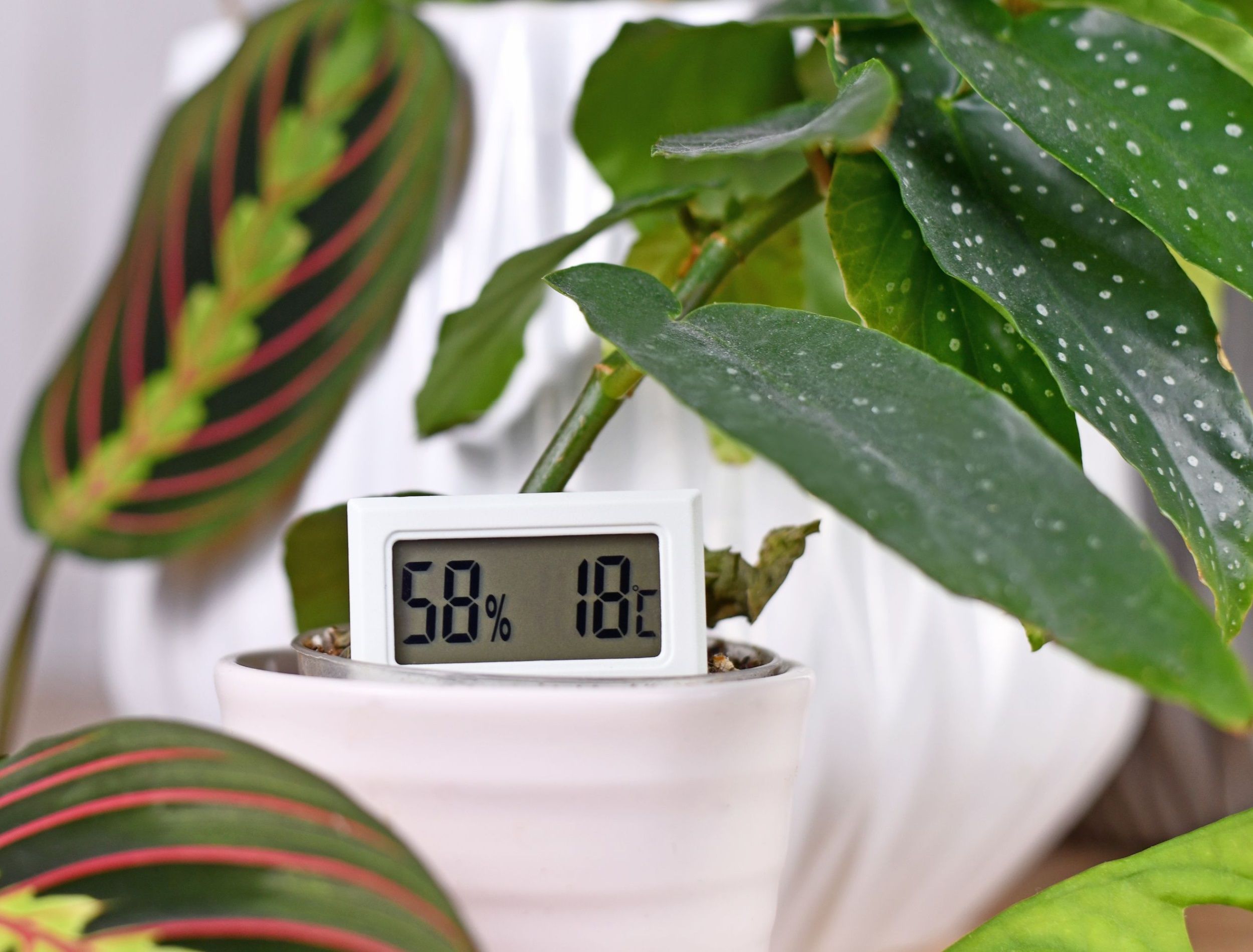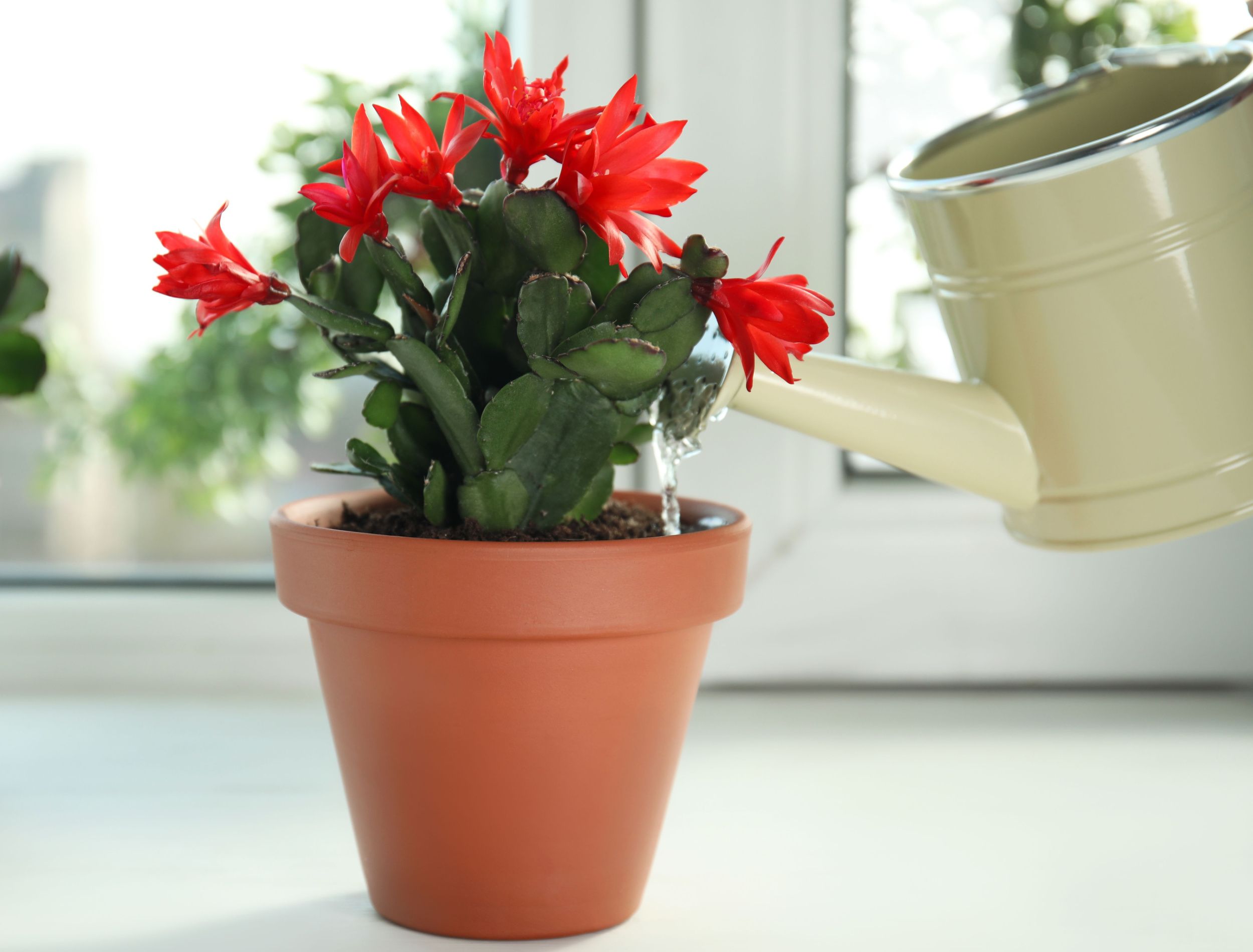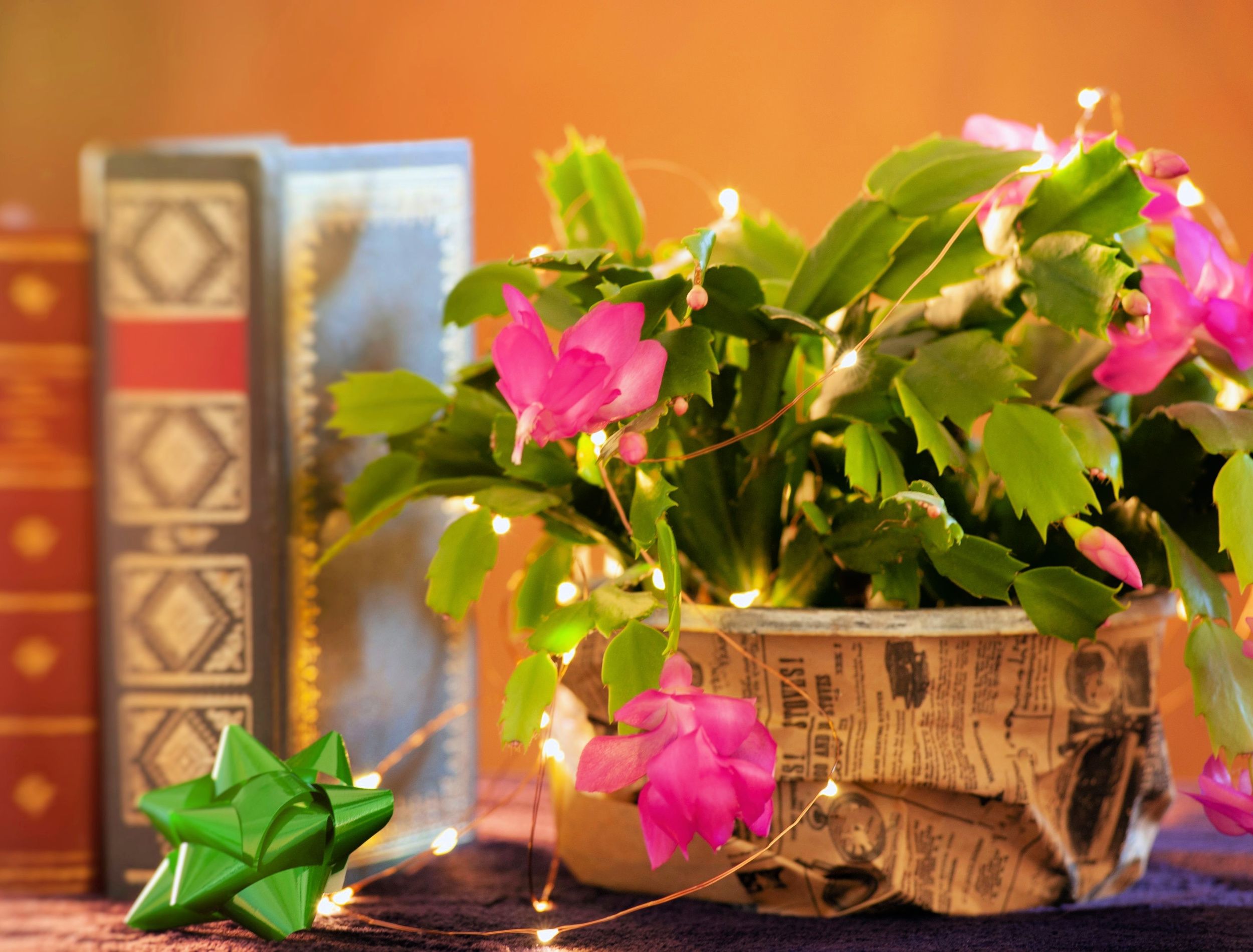A beautiful burst of color during the holiday season, Christmas cactus (Schlumbergera buckleyi) plants feature oblong, notched, succulent green leaves and bright blooms in colors such as red and pink. If your holiday cactus isn't blooming, you may wonder what you're doing wrong.
While the plants are generally low-maintenance, a simple change in your care routine can affect their ability to bloom. Learn all about the top tips for Christmas cactus care so you can get your cactus to bloom and enjoy those beautiful flowers!
Why Your Christmas Cactus Isn't Blooming
Image credits: Hosak via Shutterstock
As with all plants, a lack of proper care affects the Christmas cactus plant's ability to grow and develop flowers. Things that stop the cacti from blooming include:
- Improper lighting
- A pot that is too small
- Watering routines
- Improper temperature
- Lack of fertilizing
- Pesky pets
If you notice common issues, such as squishy stems, that can result from overwatering. On the other hand, underwatering can lead to wilting. A red or yellow coloring comes from too much sun while dropping buds result from changing temperatures, improper watering, and a lack of light.
How to Get Your Christmas Cactus to Bloom
Once you have established that a lack of blooms is the only issue and your plant is otherwise healthy, it is time to make a few changes. Investigate your plant, where it is located, and more to ensure it is as happy as possible.
Adjust Lighting
Image credits: Nadezhda Nesterova via Shutterstock
Christmas cacti require around 16 hours of darkness at night to allow buds to form, meaning they should only have up to 8 hours of sunlight daily. They like bright, indirect light with southern or eastern exposure and produce blooms in response to the short days of winter.
In preparation for the holiday blooms, you can also place the Christmas cactus in a completely dark location for around six weeks. This time in the dark encourages bud development. You'll need to give the plant dark periods throughout the season to help it continue producing flowers. As a general rule of thumb, provide the plant with at least eight days of this short-day cycle.
A Change in Temperature
Image credits: Firn via Shutterstock
Like all houseplants, keep Christmas cacti away from chilly windows and heat vents in your home. But when trying to form buds, you can expose the plant to temperatures around 55 degrees Fahrenheit at night.
If the plant is in temperatures above 90 degrees Fahrenheit, it can drop buds and fail to bloom. It's best to keep your cactus in temperatures of 65 to 70 degrees Fahrenheit.
Watering Routine
Image credits: New Africa via Shutterstock
Cutting back on watering in fall, around October and November, allows the plant to enter dormancy. While Christmas cacti are drought-tolerant and overwatering can result in death at any time of year, it also affects their ability to bloom in winter.
Allow the soil to dry out entirely between waterings during the fall. When the plant is blooming, allow the top inch of soil to dry out before watering, but don't allow the soil to dry completely. During the rest of the year, water your cactus every two to three weeks when the top third of the soil is dry.
Fertilizing, Pruning, and Repotting
Image credits: Bilalstock via Shutterstock
Repotting at least once every two years in a pot one size up with drainage ensures the plant doesn't become root bound. A root-bound plant generally won't produce blooms or develop any new growth. Replant with succulent soil and fertilize after repotting. Throughout the year, use a balanced liquid fertilizer on your plant monthly. When the Christmas cactus is blooming, switch to a bloom formula.
After you've grown your Christmas cactus for a few years, pruning can encourage new growth, a fuller plant, and more blooms for next year! Pinch back the tip of each stem segment after blooming and at the beginning of fall to create a rounded shape and help the plant develop new blooms.
Keep It Away From Pets
Image credits: Laura Lee Cobb via Shutterstock
While Christmas cacti are pet-friendly houseplants, your pets might not be friendly back! If you notice a lack of blooms or dropping buds but none of the other issues mentioned above, the culprit could be an interested kitty. To solve this issue, place your plant out of reach, on a shelf, or in a hanging basket. You can also place cat grass nearby to distract your curious cat.
Get Blooming!
The festive blooms of Christmas cactus should begin to show with the right conditions. If you don't notice them forming, something has gone awry; whether it is too much light, improper watering routines, or even pesky pets. Fortunately, you can remedy the issue and enjoy the blooms throughout the holiday season.
Do you have any tips to help your Christmas cactus bloom? Share in the comments below!


